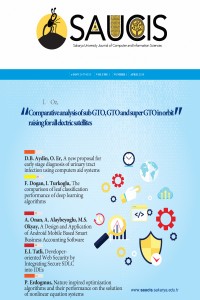Abstract
Electric propulsion system has been used on many geostationary communication satellites for station keeping maneuver because of having high specific impulse values. But in general chemical propulsion system is being used for orbit rising from transfer orbit to GEO. Recently all electric satellites market is emerging and those satellites use electric propulsion system to reach final GEO orbit. It takes 4-8 months to reach final orbit and during this progress satellites subject to extreme environmental conditions. It is mandatory to minimize number of Van Allen belt crossing to keep spacecraft healthy. Transfer orbit types and orbit rising strategies affect duration to final orbit, number of radiation belt crossing and required delta V to final orbit. In this study reaching final GEO belt for different initial transfer orbits sub GTO, GTO, super GTO are investigated in terms of duration to GEO and number of Van Allen belt crossing.
Keywords
all electric satellites geosynchronous orbit transfer orbit sub GTO GTO Super GTO van allen belt electric propulsion system low thrust
References
- Casaregola, C. (2015, July). Electric Propulsion for Station Keeping and Electric Orbit Raising on Eutelsat Platforms. In 30th International Symposium on Space Technology and Science, Hyogo-Kobe, Japan.
- Dankanich, J. W., & Woodcock, G. R. (2007, September). Electric Propulsion Performance from Geo-transfer to Geosynchronous Orbits. In International Electric Propulsion Conference, Florence, Italy.
- Duchemin, O., Le Méhauté, D., Öberg, M., Cavelan, X., Guilhem-Ducléon, M., Khimeche, G., ... & Glorieux, G. (2015). End-to-End Testing of the PPS® 5000 Hall Thruster System With a 5-kW Power Processing Unit. Proceedings of 34th IEPC, IEPC-2015-127.
- Dutta, A., Libraro, P., Kasdin, N. J., Choueiri, E., & Francken, P. (2014, June). Minimum-fuel electric orbit-raising of telecommunication satellites subject to time and radiation damage constraints. In American Control Conference (ACC), 2014 (pp. 2942-2947). IEEE.
- Geng, F., Dubos, G. F., & Saleh, J. H. (2016, March). Spacecraft obsolescence: Modeling, value analysis, and implications for design and acquisition. In Aerospace Conference, 2016 IEEE(pp. 1-13). IEEE.
- Guelman, M. M., & Shiryaev, A. (2016). Closed-Loop Orbit Transfer Using Solar Electric Propulsion. Journal of Guidance, Control, and Dynamics, 2563-2569.
- Horne, R. B., & Pitchford, D. (2015). Space weather concerns for all‐electric propulsion satellites. Space Weather, 13(8), 430-433. Kimbrel, M. S. (2002). Optimization of electric propulsion orbit raising (Doctoral dissertation, Massachusetts Institute of Technology).
- Konstantinov, M. S., Fedotov, G. G., Petukhov, V. G., & Popov, G. A. (2001, October). Electric propulsion mission to GEO using Soyuz/Fregat launch vehicle. In 52nd International Astronautical Congress, IAF-01 (Vol. 3, pp. 1-5).
- Koppel, C. R. (1999, February). Advantages of a continuous thrust strategy from a geosynchronous transfer orbit, using high specific impulse thrusters. In 14th International Symposium on Space Flight Dynamics–ISSFD XIV February (pp. 8-12).
- Ramos Moron, Natividad (2017). Indirect optimization of electric propulsion orbit raising to GEO with homotopy.
- Pergola, P. (2015). Semianalytic Approach for Optimal Configuration of Electric Propulsion Spacecraft. IEEE Transactions on Plasma Science, 43(1), 305-320.
- Rodgers, D. J., & Hilgers, A. (2003, October). ECSS-E-20-06 Draft Standard On Spacecraft Charging: Environment-Induced Effects On The Electrostatic Behaviour Of Space Systems. In 8 th Spacecraft Charging Technology Conference.
- Yang, G. (2009). Direct optimization of low-thrust many-revolution earth-orbit transfers. Chinese Journal of Aeronautics, 22(4), 426-433.
Abstract
References
- Casaregola, C. (2015, July). Electric Propulsion for Station Keeping and Electric Orbit Raising on Eutelsat Platforms. In 30th International Symposium on Space Technology and Science, Hyogo-Kobe, Japan.
- Dankanich, J. W., & Woodcock, G. R. (2007, September). Electric Propulsion Performance from Geo-transfer to Geosynchronous Orbits. In International Electric Propulsion Conference, Florence, Italy.
- Duchemin, O., Le Méhauté, D., Öberg, M., Cavelan, X., Guilhem-Ducléon, M., Khimeche, G., ... & Glorieux, G. (2015). End-to-End Testing of the PPS® 5000 Hall Thruster System With a 5-kW Power Processing Unit. Proceedings of 34th IEPC, IEPC-2015-127.
- Dutta, A., Libraro, P., Kasdin, N. J., Choueiri, E., & Francken, P. (2014, June). Minimum-fuel electric orbit-raising of telecommunication satellites subject to time and radiation damage constraints. In American Control Conference (ACC), 2014 (pp. 2942-2947). IEEE.
- Geng, F., Dubos, G. F., & Saleh, J. H. (2016, March). Spacecraft obsolescence: Modeling, value analysis, and implications for design and acquisition. In Aerospace Conference, 2016 IEEE(pp. 1-13). IEEE.
- Guelman, M. M., & Shiryaev, A. (2016). Closed-Loop Orbit Transfer Using Solar Electric Propulsion. Journal of Guidance, Control, and Dynamics, 2563-2569.
- Horne, R. B., & Pitchford, D. (2015). Space weather concerns for all‐electric propulsion satellites. Space Weather, 13(8), 430-433. Kimbrel, M. S. (2002). Optimization of electric propulsion orbit raising (Doctoral dissertation, Massachusetts Institute of Technology).
- Konstantinov, M. S., Fedotov, G. G., Petukhov, V. G., & Popov, G. A. (2001, October). Electric propulsion mission to GEO using Soyuz/Fregat launch vehicle. In 52nd International Astronautical Congress, IAF-01 (Vol. 3, pp. 1-5).
- Koppel, C. R. (1999, February). Advantages of a continuous thrust strategy from a geosynchronous transfer orbit, using high specific impulse thrusters. In 14th International Symposium on Space Flight Dynamics–ISSFD XIV February (pp. 8-12).
- Ramos Moron, Natividad (2017). Indirect optimization of electric propulsion orbit raising to GEO with homotopy.
- Pergola, P. (2015). Semianalytic Approach for Optimal Configuration of Electric Propulsion Spacecraft. IEEE Transactions on Plasma Science, 43(1), 305-320.
- Rodgers, D. J., & Hilgers, A. (2003, October). ECSS-E-20-06 Draft Standard On Spacecraft Charging: Environment-Induced Effects On The Electrostatic Behaviour Of Space Systems. In 8 th Spacecraft Charging Technology Conference.
- Yang, G. (2009). Direct optimization of low-thrust many-revolution earth-orbit transfers. Chinese Journal of Aeronautics, 22(4), 426-433.
Details
| Primary Language | English |
|---|---|
| Subjects | Computer Software |
| Journal Section | Research Article |
| Authors | |
| Publication Date | April 2, 2018 |
| Submission Date | March 29, 2018 |
| Acceptance Date | March 30, 2018 |
| Published in Issue | Year 2018 Volume: 1 Issue: 1 |
Cite
The papers in this journal are licensed under a Creative Commons Attribution-NonCommercial 4.0 International License


